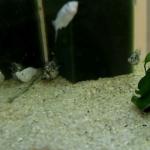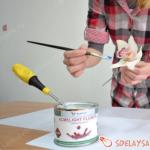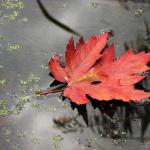Hydrangea paniculata from seed cultivation. How to grow hydrangea from seeds
Hydrangea is an amazingly beautiful flower, it will certainly become an adornment of your flower collection. It is not difficult to take care of him, the main thing is to follow the basic recommendations, which even a flower grower without experience can handle. Much more important is to know how to grow hydrangeas from selected seeds. Understand the process - and as a result, it will be possible to ensure not only the cultivation, but also the reproduction of the flower.
Growing hydrangea at home and caring for it begins with the purchase of seeds. One of the best options is to use grains brought from China or Japan. It is in these regions that the plant is found in natural habitats. You need to take the process of choosing and buying hydrangea seeds with all seriousness, because their germination depends on it.
A truly high-quality seed must meet the following requirements:
- appropriate appearance. Integrity and absence of external damage are mandatory
- characteristics by which hydrangea grains should be evaluated;
- the seeds do not have traces of the disease, are not sluggish and not frozen;
- be sure to ask if the proposed seed meets the varietal characteristics.
Propagation of hydrangeas by seeds is an effective method that flower growers often use. Plant the seeds of a flower - and you can grow a hydrangea and organize a full-fledged care for it.
Planting process
After acquiring the seeds, it's time to start planting them. What is recommended to know about this process for every grower? You can sow the seeds immediately after purchasing them, although pre-germination is still welcome. Take a cotton wool or gauze, wet it with water, and spread the grains on top. When they swell, sow them in the ground.
Regarding the process of planting hydrangea seeds, here, first of all, pay attention to the composition and quality of the soil. It is desirable that it includes peat, sand, humus, turf and forest land. Let's say you want to save on the substrate, what to do in this case? A good alternative is to use earth from molehills.
When the substrate is ready, take a small box, fill it with earth, and then spread the seeds. From above they can be sprinkled with a slight layer of soil. The main thing is to cover them with glass on top. From time to time, do not forget to remove it to spray the substrate with water.

Video "Seeds for seedlings"
Care and cultivation

To fully care for hydrangeas at home, be sure to prune at least once a year. Remove old, lifeless branches from the bush.
Reproduction of hydrangea and its types

Growing hydrangeas at home will be effective if you master the basic methods of plant propagation. There are several of them:
- propagation by seeds. In addition, it is worth noting about this method only that it is considered not easy and common, but it is used by experienced flower growers;
- cuttings. After cutting off the shoots, place them in water or soil, and when they take root, plant them in a permanent place;
- layering. In special grooves in the ground, it is necessary to spread the shoots;
- offspring. Shoots are separated from the mother bush and then grown as an independent plant;
- seedlings. You do not need to prepare material for planting, you just have to choose a place for it.
Propagating and growing hydrangeas, as well as caring for them, is not a particularly complicated process. In any case, as a result, you will get a flower of stunning beauty, you will not be too lazy to tinker with it.
Hydrangea belongs to the genus of flowering plants.
It got its name for its love of moisture, and in Greek it means "a vessel with water."
In hydrangeas, first of all, they are attracted by lush inflorescences, which reach 20 cm in diameter and delight us from spring to late autumn.
The color can be very different, and it is up to you.
From how you take care of her, how to feed her with fertilizers.
Growing hydrangeas. Selection of planting material, seeds
Previously, hydrangea was considered difficult to care for and unable to endure winter frosts. However, now there is a huge number of varieties that can withstand not always favorable conditions. Therefore, when choosing seeds and seedlings for planting, pay attention to the hardiness of plants and the ability to survive the cold.
There are such main types of hydrangea:
. Broad-leaved, large-leaved (Macrophila)- an incomparable hydrangea, which pleases with all sorts of colors (pink, raspberry, blue, blue). Low in height and blooms on shoots of the second year. Flowering is plentiful, but short-lived. At the end of August, such a blooming hydrangea can no longer be found. Afraid of frost, it must be well covered for the winter. Previously, it was grown as a houseplant, but with the development of new varieties, it has become possible to grow in the garden (Grandiflora, Lilacina, Perfecta).
. Paniculata- a cold-resistant tall bush that winters well. The inflorescence goes to the cone. It blooms from August to October, mostly white or its shades (Vanille Fraise, Grandiflora).
. Treelike- bush, 1-3 meters high. Unpretentious in care, shade-tolerant, winter-hardy. Blooms earlier than other species, blooms in a hat from July to late autumn. The color is usually white (Annabelle, Radiata, Sterilis).
. petiolate hydrangea, which is a climbing plant. It is attached by adventitious roots to cracks and irregularities. Those. this plant will braid all uneven walls or other objects with its white flowers. It is also a ground cover plant that will spread around. And if he has some kind of support, then he will grow very quickly. In the care is also unpretentious.
It is believed that hydrangea blooms only at the ends of annual shoots. However, this applies only to broad-leaved hydrangea. Here, the peculiarity lies in the fact that in the current season, flowers bloom from the upper buds of last year's shoots, and they begin to grow in autumn.
Hydrangea propagates in several ways:
Cuttings - the most common way;
Layering, dividing the bush, grafting;
Seeds that you can buy or collect yourself.
When buying seeds, give preference to trusted manufacturers. Also keep in mind that the planting material is very small and does not require additional processing.
Growing hydrangeas. Sowing and planting (timing, top dressing, shelter, temperature, soil, etc.)
Before sowing, first of all, you need to choose the right place for planting and prepare it. Hydrangea loves shady and cool places. Don't plant it in direct sun. She will burn and get sick all the time. A sunny location requires abundant watering. Young seedlings also need wind protection. Considering that the root system of the hydrangea is not quite deep, the pits for planting are dug at some distance from trees and other tall shrubs. This is done so that the latter do not take away water and essential nutrients from her.
When planting, the seeds are sown superficially, do not bury and use the irrigation method - spraying. You can sow in containers already in winter, and in open ground - at the end of April-May. In the open air, sprinkle the place of sowing with sand, which will act as a drainage when watering. With this method of growing hydrangeas, the first shoots will appear in a month. At this time, fulfill the necessary conditions for care: make sure that there are no weeds, constantly water, make the necessary feeding. If frost is expected, then the seeds are covered with paper.
As for planting seedlings, hydrangea can be planted in a permanent place both in early spring (before the leaves bloom), and in summer and autumn.
The process of planting hydrangeas
Bushes are planted at a distance of about one meter from each other. The pit is dug shallow and 2-3 times larger in diameter than the root system. A fertile mixture is poured to the bottom and interfere with it with the soil. It is recommended to purchase a special soil for azaleas, rhododendrons and hydrangeas, which contains an acidic top layer of peat. Seedlings are placed so that the roots are not above the soil level. Then the bushes are abundantly watered with water, and the soil is mulched.
Most hydrangeas require the following conditions when planting: fertile, rich, moist soil. Add compost, peat, humus to enrich poor soils.
A distinctive feature of this plant is that when growing a hydrangea, it can change color. A necessary condition for this is, first of all, the composition of the soil. In acidic soil (pH 5.5), a culture of blue flowers and shades is produced, and in alkaline soil, pink ones. Unfortunately, you cannot change the color of the white flower. Cream hydrangea can be changed to pink or raspberry. To get blue and blue flowers, it is necessary to water the plant every week with a solution of special acidifying agents and create all the necessary conditions for it.
Please note that you can change the color of the flowers, but not instantly. Color correction takes weeks, even months. It is easier to change blue flowers to pink than pink to blue. Wait until the plant is at least 2 years old to give it time to recover from the shock of its original planting.
Also, hard water can affect flower color, turning blue flowers pinkish. So use rainwater for irrigation. In autumn, hydrangea flowers combine pink and green. It's just an aging process that cannot be reversed. The following year, the flowers will return to their original color.

Blue and pink flowers
The composition of the soil affects the color of the hydrangea, but how to determine it?
You can determine the acidity of the soil at home in the following way: pour a handful of earth with table vinegar. If the watered area begins to "bubble" strongly, then the soil is considered alkaline, if not, then acidic. To increase the acidity, it is necessary to add fertilizers, sulfur, kefir or pine needles to it. To reduce acidity, it is necessary to treat the soil with lime mortar.
This unsurpassed shrub tolerates almost any soil with proper care and additional feeding. It also blooms from mid-summer to autumn, when little can be in bloom.
Growing hydrangeas. Care, feeding
After planting a young hydrangea, the first step is to trim it. All damaged branches and weak stems are removed. This is done to form the main stems.
Annual pruning is carried out in the spring before bud break. This is done in order to:
Giving the shrub a decorative shape;
Removing dead stems that will take away the nutritional properties of the plant;
Shoot thinning. Do not worry, the hydrangea is distinguished by the fact that it is very easy to recover and has a good growth force;
Shrub rejuvenation.
Depending on the type of hydrangea, there are necessary conditions and differences in its pruning.
Panicle hydrangea stem is formed by removing new shoots that grow from the ground. Upon reaching the desired height, they begin to form a crown: every year the topmost young shoots are completely removed. That is, we count three or four paired leaves in height from the base and cut them off. Observing the necessary conditions, you will get the desired shape of the shrub.
Tree hydrangea is cut off, leaving 2-4 pairs of the strongest buds.
There is also anti-aging pruning, which is carried out for a plant that is more than 3 years old. Its goal is to provide all the necessary conditions for abundant and rich flowering of hydrangeas.
If pruned incorrectly, the plant will not please you with the beauty and abundance of flowering.

bush pruning
A necessary condition for growing hydrangeas is its abundant watering. If this is not done, the plant will wither. Do not allow the soil to dry out, which should always be moist even near the roots. Water regularly and plentifully, especially in dry and hot weather. During rains, watering is reduced. It is also recommended to loosen the soil several times a season after watering.
An important component in the care of this crop is top dressing.
It is necessary to fertilize flowers until June, and then top dressing must be stopped. If your soil is rich, then you can not fertilize the hydrangea. And if it is light or sandy, then it is better to feed the plants once a year at the end of winter or in spring.
If you want to achieve an increase in flowers and leaves, then top dressing must be carried out with organic and mineral fertilizers, this is a necessary condition for them. Do not overdo it with the addition of substances that include nitrogen. This will lead to a deterioration in the winter hardiness of the plant.
Feeding steps:
1) spend early in the spring. To do this, top dressing is scattered around the trunk circle and mulched. It can be, for example, a solution of carbamide.
2) in two weeks. You can make complex fertilizers of superphosphate and potassium sulfate.
3) if necessary, top dressing is carried out no more than 2-3 times per season in reduced doses.
Strengthen the shoots with a solution of potassium permanganate.
Every year, observing the necessary conditions for care, tree trunks are mulched to a height of up to 30 cm with a mixture of compost (leaf humus) with sawdust, mowed grass or coniferous branches. Small plants for overwintering can be bent to the soil and covered with dry earth, covered with a film on top.
Major pests and how to deal with them
With proper care and compliance with agrotechnical requirements, growing hydrangeas can do without diseases and pests.
But things like this can happen:
. powdery mildew- this fungus appears at very high humidity, temperatures above 20°C and in the absence of sufficient sunlight. To combat it, use a solution of soapy water and copper sulfate (150 g of soap and 15 g of vitriol per bucket of water).
. Hydrangea ring spot- spots appear on the leaves, from which it begins to deteriorate. Also, the plant loses its ability to bloom. This disease is not treated, so be very careful about the quality of the seedlings.
. spider mite may appear in dry weather. With a small lesion, they are not as noticeable as with a large one. To get rid of it in care, such acaracids as thiophos, Fitoverm, Vermitek preparations are used. Soap treatment may also help.
Great harm to hydrangeas snails that eat buds and leaves. You can fight them by removing them from the stems (like Colorado potato beetles) or you can use pesticides such as metaldehyde or Thunderstorm.
To avoid diseases and pests, observe the following agrotechnical requirements:
1) Avoid bright scorching sunlight;
2) observe the irrigation regime, avoiding drying or waterlogging of the soil;
3) apply top dressing in a timely manner and according to the correct technology. Don't burn the plant;
4) do not allow the plantings to be thickened. Give plants freedom.
Subject to all these necessary conditions for growing hydrangeas, she will delight you with the splendor of her flowering all season. After all, the huge hydrangea inflorescences give it such a special charm that is difficult to resist.
Beautiful hydrangea will decorate every garden. The flower beckons with a huge variety of colors and species. Grow hydrangea by sowing and cuttings. If there is nowhere to get a sprout, then we buy seeds, read the article and proceed to planting.
Seeds should be germinated before planting. To do this, take a saucer, put disheveled cotton wool on the bottom, pour out the seeds and cover with another layer of cotton wool. Pour boiled water into a saucer and leave for a couple of days. If an unpleasant odor or mucus appears, immediately rinse the seeds under running water and soak again. You can sow as soon as the root appears or the seed swells. Planting is carried out with dry seed. The soil for hydrangeas should contain sand, peat, sod, leafy or coniferous soil, humus. If you don't have all the ingredients, dig up forest soil or harvest molehills. With mass reproduction of hydrangeas, planting is carried out in wooden boxes, then covered with glass. If in a flower pot, then the sprout is covered with a jar. Consider sowing in more detail.

To get a lot of seedlings, take a large wooden box up to 15 cm deep. Pour the earth, leaving 3-5 cm of free sides. Sow dry seeds directly on the ground without additional deepening into the soil and cover. Pour plenty of water from a watering can and cover with glass or film. As soon as the first shoots appear, remove the film. At this time, monitor the soil moisture and periodically ventilate the ground. In the same way, hydrangeas are sown in flower pots, only a jar is used instead of a film. By the way, the cuttings are also placed in a jar for room breeding.

For germinated or dry seeds that are planted in open soil, dig a small bed. Dry seeds are scattered randomly, then trampled down and sprinkled with sand or a 1 cm layer of earth. Sprouted seeds are gently immersed in the soil to a depth of 1 cm, and also sprinkled. Landing in gardens is carried out in well-warmed soil, the optimal time is May-beginning of June. The first leaves will appear in 3 weeks to a month.

Planting through seedlings will accelerate the growth and flowering of hydrangeas. When the plant has given two true leaves, plant the thick shoots in pots. As soon as the bushes have reached 7-10 cm, plant them in pots up to 10 cm deep or send them to open soil if spring is outside.

Care for young and adult individuals consists of feeding, watering, weeding from weeds and processing from pests. Always keep the soil of young plants moist, as soon as the top layer of the soil dries, irrigate with water again, but do not let the plant flood. Buy top dressing in special stores specifically for hydrangeas or acidic with a pH level of 5.5. There is a little secret how to make a striking, blue-pink plant from a bush of one color. In the spring, add aluminum salts, sulfate or sulfur to the soil. For a smooth color transition, enrich the ground unevenly.

And finally, let's fix the material: garden hydrangea loves water, shade and acidic soil. After watching the video, you will get interesting information about the intricacies of the composition of the earth and mulching. Follow the rules for care, and a magnificent riot of flowering will delight every year.
To decorate a flower bed or garden, you can use such an amazing plant as hydrangea. Today it is present in a wide variety, thanks to which the flower garden can be made original and beautiful. Gardeners prefer to grow this crop from seeds. But in order for the hydrangea to bloom for a long time, you need to know how to properly care for it.
Before you start planting seeds, you need to know how they look so as not to buy a fake. In addition, make sure that they are whole and that there are no spots or other marks on them that indicate poor quality of planting material. The hydrangea grains themselves are oblong in shape and dark brown in color.
How and when to plant seeds

Planting the seeds of the plant in question can occur without preparatory measures. Although it is possible to perform preliminary germination. This results in better seed germination. To do this, lay the planting material on a disheveled cotton wool, and then on the bottom of the saucer. Now cover the seeds with a second layer of cotton wool. Add boiled water to the saucer and leave the container for a couple of days.
At the same time, it is necessary to check the seeds from time to time. There are situations when the planting material is covered with mucus. Then it will have to be urgently washed and repeated again. Seeds that are in germination should only be planted when they swell.
Now it's time to take care of the quality of the soil. It should contain peat, sand, turf and forest soil, and also humus. If it is not possible to create such a soil mixture, then you can use the earth taken from molehills.
For planting seeds, it is necessary to prepare a deep box. Place the earth in it, but it should not reach 3-5 cm to the sides. Now you can place the seeds. At the same time, they will have to be sown without forming depressions in the soil. Slightly crush the earth on top. Now carefully irrigate everything and lay glass on top of the box.
On the video - growing hydrangeas from seeds:
It is worth removing the glass only after the first seedlings have been formed. At this time, it is important to monitor the level of soil moisture. To do this, you have to ventilate the earth.
Seeds can be planted directly and in open ground. To do this, you need to dig a bed. Scatter the seeds randomly. Slightly trample them down and sprinkle with sand.
Care

Hydrangea is a plant that loves moisture. While caring for it, it is necessary to ensure high-quality watering. If there is a drought on the street, then 20 liters of water should go to the bush per week. In order for the soil to hold moisture longer, it is necessary to take care of its acidity. For these purposes, mulching with bark, leaves and needles is used.
Loosening the soil to a depth of 5-6 cm remains obligatory. If this is not done, then the hydrangea will not grow well. A few loosenings will be enough for the season. Mineral fertilizers should be applied regularly.
Hydrangea refers to plants that love warmth. If the cold is approaching, then it is worth preparing a shelter for the bushes.
It is worth hilling the plants to a height of 20 cm, and then sprinkle each with a bucket filled with dry peat. But to combat ailments, you can use drugs such as Karbofos, Meta and Fitoverm.
For amateur gardeners, it is worthwhile to see how the planting and care of Ipomoea annual is carried out.
On the video - when to plant hydrangea seeds for seedlings:
Also, a plant in Siberia should be fed. Do this 4 times a year. Use organic and mineral fertilizers. Liquid manure will be an excellent remedy. But only its quantity should be moderate. Otherwise, it will harm the bush. You can buy fertilizers at any store.
But what is best to choose an annual or perennial Cineraria silver is described in great detail in this
It will also be interesting to learn about how it happens, you can see it in the video in this article.
All ingredients are balanced there. It is enough just to add the selected agent to the water during irrigation. Top dressing should be carried out in early spring, when buds begin to form, in summer and before winter.
Hydrangea is an unpretentious ornamental plant, which is actively used today in the preparation of the original flower arrangement. Due to the wide range of varieties, each gardener will be able to choose his ideal option. The plant can grow even in the conditions of Siberia, if you strictly follow the recommendations during planting and care.




